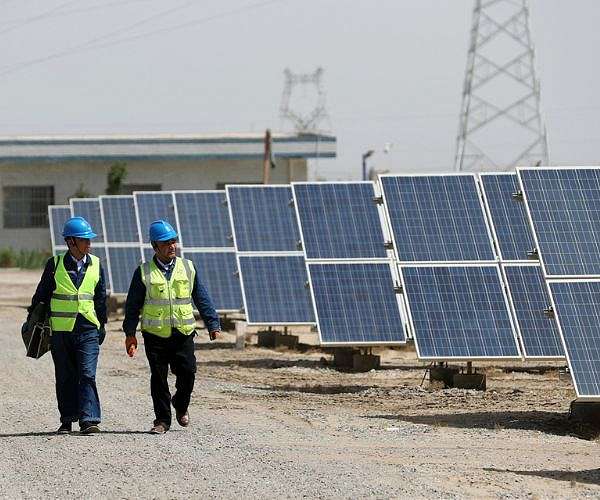Cuba looks at the sun to solve his energy crisis
Not far from the ruins of an unfinished nuclear power plant in the Cuban province of Cienfuegos, hundreds of employees hastily install 44,000 solar panels, while the island is looking again to reduce its dependence on oil to escape an energy crisis.
Forty years ago the solution was considered Russian nuclear energy. This time it is the sun. With help from China.
Dozens of containers with Chinese inscriptions have been drawn up in the photovoltaic park “La Yuca”, where forklift trucks loaded with solar panels weave between the concrete frames they hold.
“We lay threads, graves trenches and install panels,” an employee in the project completed in May explained from the hectic activity.
Cuba, an island of around 10 million inhabitants, remains highly dependent on fossil fuels to operate its eight outdated thermo -electric power plants, most online since the 1980s and 90s and susceptible to frequent demolition.
The communist government approved the construction of 55 solar parks by 2025.
Five of them will be in the central province of Cienfuegos, which also organizes an industrial port and a refinery, and was chosen in the 1980s to organize a nuclear power plant funded by Soviet that was half built when the USSR collapsed.
The fragile electric schedule of Cuba has gone offline four times in the last six months and dives most of the country into the darkness, sometimes for days in a row.
The majority of the country is confronted with almost daily malfunctions, mainly accused of fuel shortages.
“More than half of all fuel consumed by the country goes to electricity production,” Minister of Energy and Mijnen Vicente de la O Levy recently told the State Runned newspaper Granma.
– millions of dollars –
The majority of the oil comes from Venezuela, which, like Cuba, is under American sanctions and the administration of President Donald Trump recently withdrew licenses, so that transnational companies could extract crude oil there.
The country also uses floating electric plants that are rented from a Turkish company and generators that are fed by crude oil, even because there is not enough gas for the cars, tractors and ambulances of the island.
The country produces approximately a third of the fuel that it consumes from domestic oil fields and imports the rest.
De la O Levy has said that solar parks are central to the goals of the renewable energy enforcement of Cuba because the “investments are cheaper, they are being built faster and can be spread throughout the country.”
The communist island, struggling with its worst economic crisis in decades, is intended to generate 12 percent of renewable sources by the end of 2025 and 37 percent by 2030.
By the end of this year, it hopes to produce 1200 MW per day of solar energy – almost the same as its daily electricity deficit of 1500 MW.
The ambitious project requires investment of several million dollars, and with few Western friends, Cuba likes to accept support from what the presidency described in February as “the sister of #china.”
A total cost estimate has not been made public.
– ‘The fastest way’ –
Only 15 kilometers (9.3 miles) from “La Yuca” is an impressive steel dome that is designed to protect what a nuclear reactor would be-the last large-scale attempt to change the Cuba energy mix.
Russian inscriptions are still visible on the thick concrete walls.
The project was canceled in 1992 by the then President Fidel Castro after the fall of the USSR, a Cuban ally, who had largely financed the project and offered physicists and engineers.
Eliecer Machin, a thermophysicist who is trained in the USSR who still lives in the “nuclear city” that is built to accommodate the staff of the potential power plant, remembers the “hard blow” when it was closed.
The 60-year-old now earns a living as a pig farmer.
Nowadays, as a result of mistakes made in the past, he said, Solar is ‘the fastest way to obtain energy’.
Researcher Jorge Pinon from the University of Texas said that the solar energy would mean little if Cuba has no batteries to store it for use in periods of darkness.

